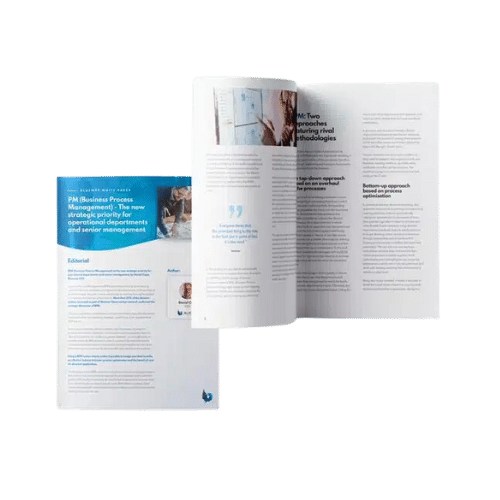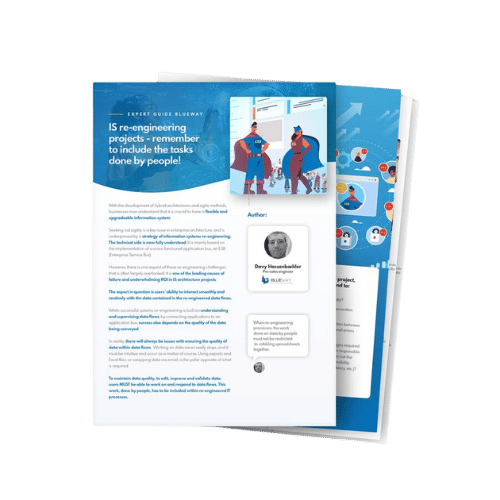A large number of people in various roles are involved in each process in your organisation. Technical and functional staff, the IT department… each is inclined to see a process from their own perspective. However, if we want to take a step back with the aim of optimising a process, or designing a new one, we have to speak the same language and use the same descriptions.
Which is where the BPMN 2.0 standard comes in.
The BPMN 2.0 standard in brief
BPMN stands for Business Process Model and Notation. Obviously the idea of “BPM”, business process management, is very much included, meaning the analysis, improvement, modelling and automation of the organisation’s processes, and the monitoring of them over the course of time.
With the ‘N’ for Notation, BPMN is a business process modelling method in which graphical representation plays a key role. The objective is to determine a common framework for representing business processes.
It is maintained by the OMG (Object Management Group), an American consortium that aims to standardise and promote the object model. Since it was updated in 2011, we now refer to BPMN 2.0 and this standard has become the benchmark in terms of process modelling.

Download our white paper on Business Process Management
The objectives of the BPMN 2.0 standard
It should be obvious that ensuring the whole organisation shares the same picture of any given process is essential. However, this synchronisation of views requires all involved – technical, functional and end users – to easily understand the processes involved. With no common language understandable to all, things can be unclear…
The Business Process Model and Notation method works at exactly this level to determine this common framework for graphical representation of processes. The method is independent of the application or BPM software used. This is an important point that chimes with our values: at Blueway, we firmly believe that meeting business challenges should not be constrained by systems and technical factors.
Beyond the graphical aspect, BPMN2 also standardises the descriptions of objects, their attributes and file formats.
Are UML and BPMN complementary or competitors?
UML and BPMN dovetail together neatly because they meet two different needs:
- BPMN: the BPMN standard concentrates on business process analysis and design. Within these processes, systems run and interact with each other.
- UML: a standardised, visual modelling language used to represent system design graphically. It focuses on analysis and design of the IS. In conjunction with the BPMN, it can be used to model diagrams in use cases, for example.

Download our expert view on architecture re-engineering.
The principles behind BPMN 2.0: simple without being simplistic
The BPMN 2.0 standard comprises a set of various graphical elements that can be used to produce diagrams anyone can read and understand.
There are three main basic elements in the BPMN method:
- Activities: activities describe the action taken in an instance of the process (task, transaction, sub-process or call).
- Gateways and connectors: gateways either merge or fork paths (or flows). Connectors (connecting objects) link BPMN flow objects.
- Events: these represent an event within a process (start, intermediate and end events).
Conclusion: BPMN 2.0 & Process Governance
Blueway’s Process Governance module makes full use of the BPMN 2.0 standard. We are firm believers in putting people and business needs back at the heart of processes. A shared representation of the processes within a business helps to achieve that.
Always looking to democratise the view of processes within an organisation, our BPM modelling module is designed to be readily understood by business users. The definition of roles, participants, stages, actions and so on all occurs within an intuitive and visual interface. Process Governance allows you to automatically create a BPMN2-compliant specification from your process models. Documents linked to the model can also be reproduced in the specification.

Want to discuss Business Process Management with an expert?





